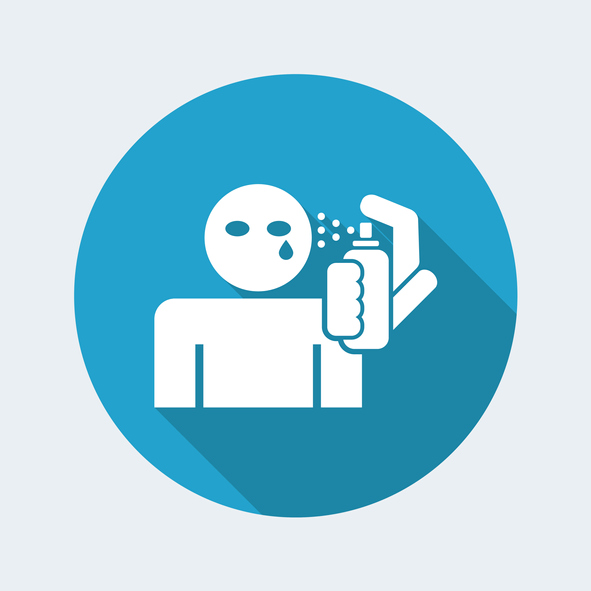What Exactly is Tear Gas? And How Can You Be Proactive About Exposure?

Like many of you, I’ve been glued to the news lately, watching all of the events unfold from the death of George Floyd. There have been unprecedented protests, some of which have turned into riots and resulted in law enforcement using tear gas to control the crowd.
Singer, Madison Beer, revealed that she was tear gassed while protesting the death of George Floyd. She posted that she "was just tear gassed," as well as "a selfie of her glassy, red-rimmed eyes."
Similarly, "Colors" singer, Halsey, shared her experience where she witnessed firsthand many people being tear gassed. According to Halsey, "innocent peaceful protestors" were tear gassed at these protests.
Seeing and hearing about people being exposed to tear gas motivated me to explore exactly what tear gas is. It is not considered to be a lethal substance, but it can cause harm and even in some cases, death. It was especially concerning to me that tear gas causes coughing, because coughing in crowds may be one way to spread COVID-19.

Tear gas is also called a “riot control agent.” According to the Centers for Disease Control and Prevention (CDC), the most common compounds found in these agents are chloroacetophenone (CN) and chlorobenzylidenemalononitrile (CS).
“What's called tear gas actually comes in a powdery solid form, rather than a gaseous state. Commonly known by their initials, CN and CS are deployed as tear gas when the pressurized powder is mixed into a liquid formulation that is then released into the air,” according to this CNN report.
The Chemical Weapons Convention of 1993 actually banned the use of riot control agents/tear gas “as a method of warfare.” Despite this, police are still legally allowed to use tear gas for crowd control.
“Tear gas has similar effects on the skin, nose and lungs to pepper spray, another crowd dispersal tool,” reports CNN.
Once released into the air, people can be exposed to tear gas through skin contact, eye contact or just breathing. Being exposed to tear gas can cause excessive tearing and/or burning of the eyes, blurred vision, redness of the eyes, runny nose, burning and swelling of the nose, burning and irritation of the mouth, drooling, difficulty swallowing, chest tightness, coughing, a choking sensation, wheezing, shortness of breath, skin burns and rashes, nausea and vomiting.
According to the CDC, how intense your reaction to tear gas is depends on the amount to which you are exposed, whether you are exposed indoors or outdoors (indoors is worse), how long the exposure lasts and more.
As you can probably imagine, being exposed to tear gas is especially frightening for someone who already has a health issue that may cause difficulty breathing (such as obesity or asthma).
The CDC reports that long-lasting exposure or exposure to a large dose of tear gas (especially in an indoor setting) may cause blindness and glaucoma. It may even cause respiratory failure which can result in death or death from severe chemical burns to the throat and lungs.
Inhalation is usually the main way people are exposed to tear gas. If you are in a situation where tear gas has been released, leave the area as quickly and safely as possible. It is also advised to get to the highest ground possible. Vapors from tear gas tend to travel closer to the ground.
If you are exposed to tear gas and your eyes are burning and/or your vision is blurred, the CDC recommends rinsing your eyes with plain water for 10 to 15 minutes. If you wear contacts, remove them and throw them away. If you wear glasses, remove and wash them.
You also want to remove your clothing when you can after being exposed to tear gas. You should wash your skin with warm soap and water. Washing your hair is also advised. You will also want to dispose of the clothes that you wore when you were exposed. For step by step instructions, read here. And if you were wearing any kind of jewelry during exposure, remove and wash as well.
With everything going on in the world today, we never know what obstacles we may face if we are forced to defend our right to peacefully protest. This is why it is important to be proactive and learn about these issues.
Enjoy your healthy life!
The pH professional health care team includes recognized experts from a variety of health care and related disciplines, including physicians, attorneys, nutritionists, nurses and certified fitness instructors. This team also includes the members of the pH Medical Advisory Board, which constantly monitors all pH programs, products and services. To learn more about the pH Medical Advisory Board, click here.







